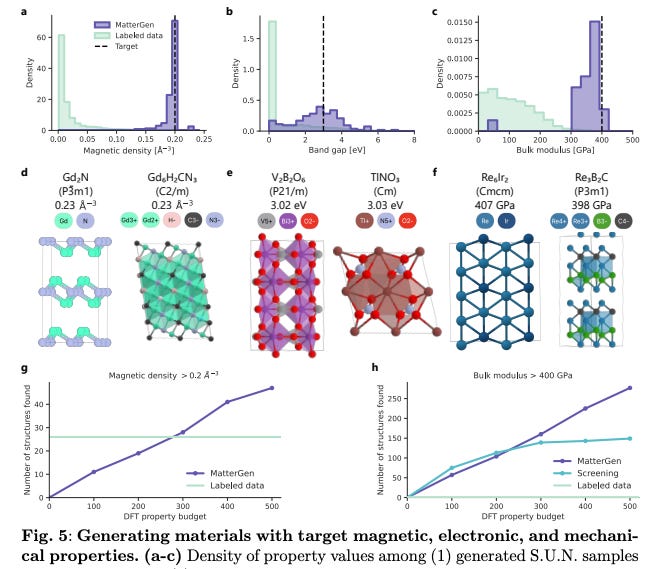MatterGen: How AI-Generated Materials Could Transform Construction
Breakthrough in crystal structure generation opens new possibilities for building science
Microsoft Research's new AI system MatterGen represents a significant breakthrough in computational materials science that could accelerate the discovery of novel building materials. While the technology is focused on generating stable crystal structures, its potential applications in architecture, engineering and construction (AEC) are worth exploring.
The Breakthrough: Teaching AI to Design Stable Materials
MatterGen uses diffusion models to generate new crystalline materials with desired properties. The system works by gradually refining random arrangements of atoms into stable crystal structures through a process similar to how image-generating AIs like DALL-E create pictures.
Key innovations include:
Ability to generate structures that are twice as likely to be stable compared to previous methods
Fine-tuning capabilities to target specific material properties
Coverage across the entire periodic table
High success rate in creating novel, unique structures
What makes this particularly exciting for construction is MatterGen's ability to work across the entire periodic table while optimizing for multiple properties simultaneously. This means we could potentially design materials that are not just strong, but also lightweight, sustainable, and cost-effective.
Why This Matters for AEC
While MatterGen wasn't specifically designed for construction applications, its capabilities align with several key industry needs:
New Sustainable Materials: The ability to generate materials with targeted properties could accelerate the development of more sustainable building materials. For example, discovering new cement formulations with lower carbon footprints or identifying novel insulation materials.
Performance Optimization: MatterGen can be fine-tuned to optimize for specific properties like strength, thermal conductivity, or electrical characteristics. This could lead to better-performing building components and systems.
Supply Chain Resilience: The system demonstrates the ability to design materials while considering supply chain risk factors. This could help develop alternatives to materials with volatile supply chains or those dependent on rare earth elements.
Potential AEC Applications
Some specific ways MatterGen's technology could impact construction:
Structural Materials
New high-strength, lightweight composites
Novel concrete admixtures
Advanced steel alloys with improved properties
Building Envelope
Better performing insulation materials
Smart windows with tunable properties
More durable weatherization materials
MEP Systems
More efficient heat exchange materials
Novel semiconductor materials for building systems
Advanced filtration materials
Implementation Considerations
While exciting, several factors will influence adoption in AEC:
Scale-up: Moving from computational models to manufactured materials requires significant R&D investment.
Testing & Certification: New materials need extensive testing and regulatory approval before use in construction.
Cost: Manufacturing processes need to be economically viable at construction industry scales.
Looking Ahead
MatterGen represents a significant step forward in our ability to computationally discover new materials. For the AEC industry, this technology could accelerate innovation in building materials and systems, potentially helping address key challenges around sustainability, performance, and resilience.
As we look to create more sustainable and higher-performing buildings, tools like MatterGen may become an important part of the industry's innovation toolkit. While not a silver bullet, it represents an exciting new capability that could help shape the future of construction materials.
What new building materials would you most like to see developed? Share your thoughts in the comments below.




